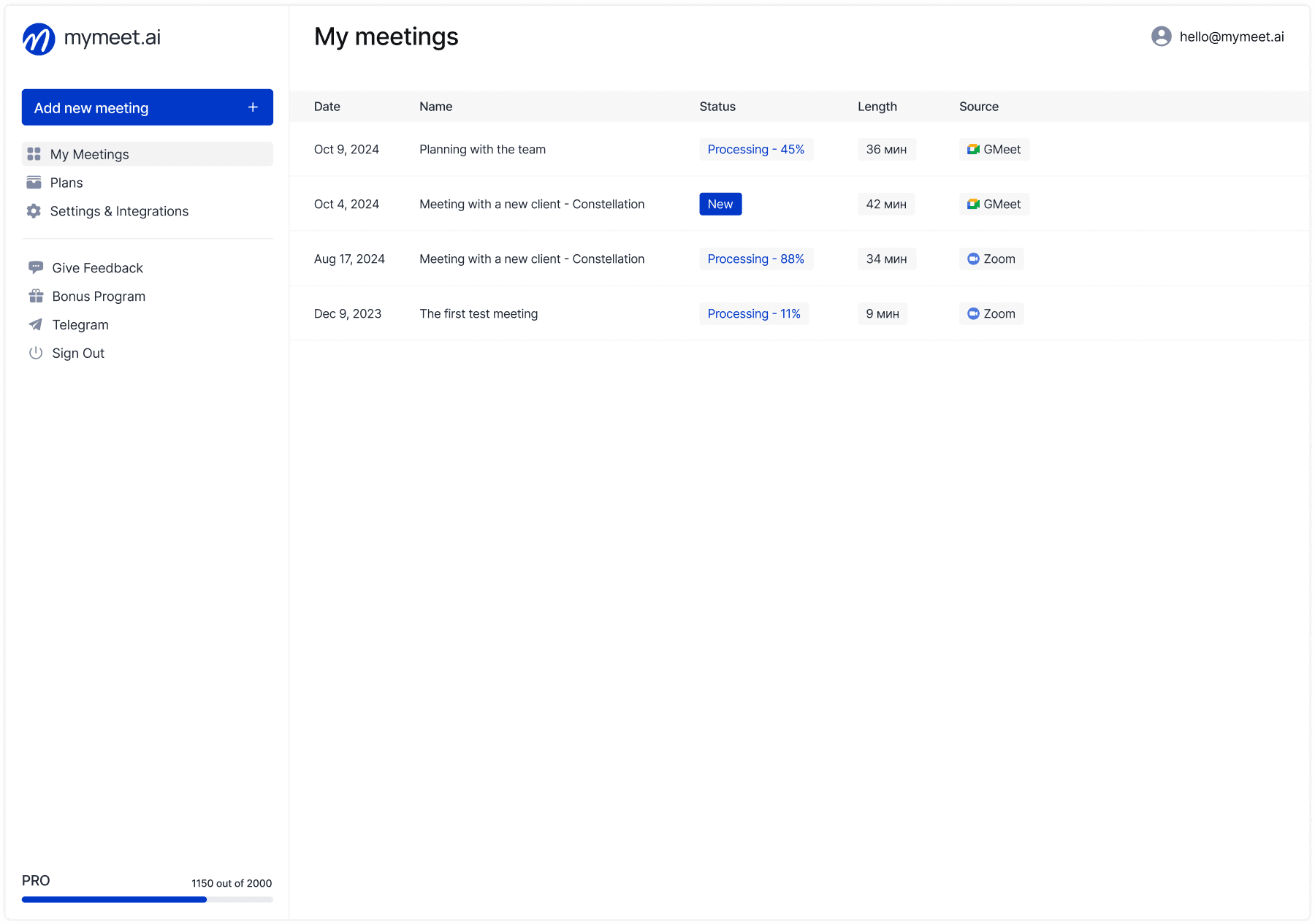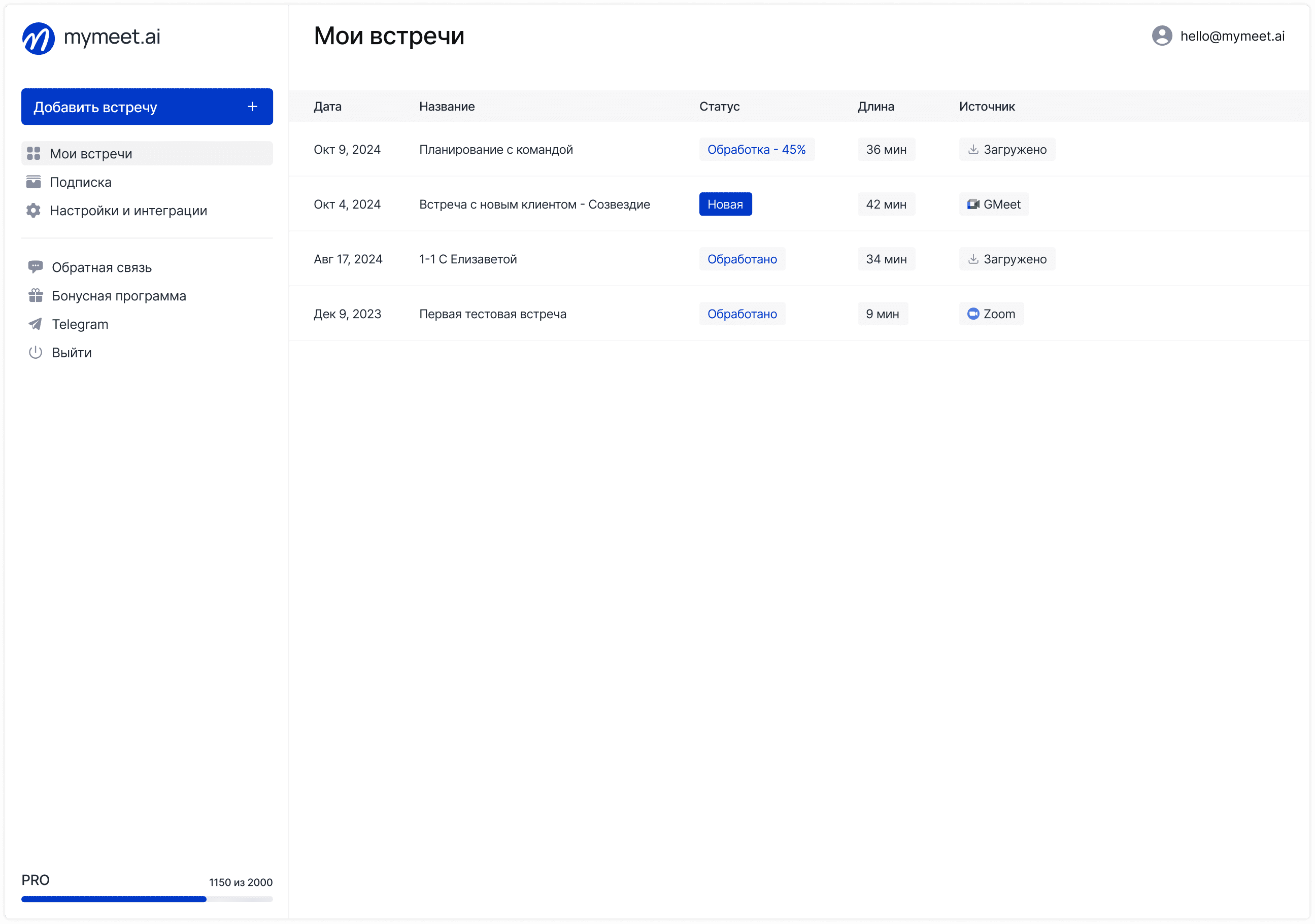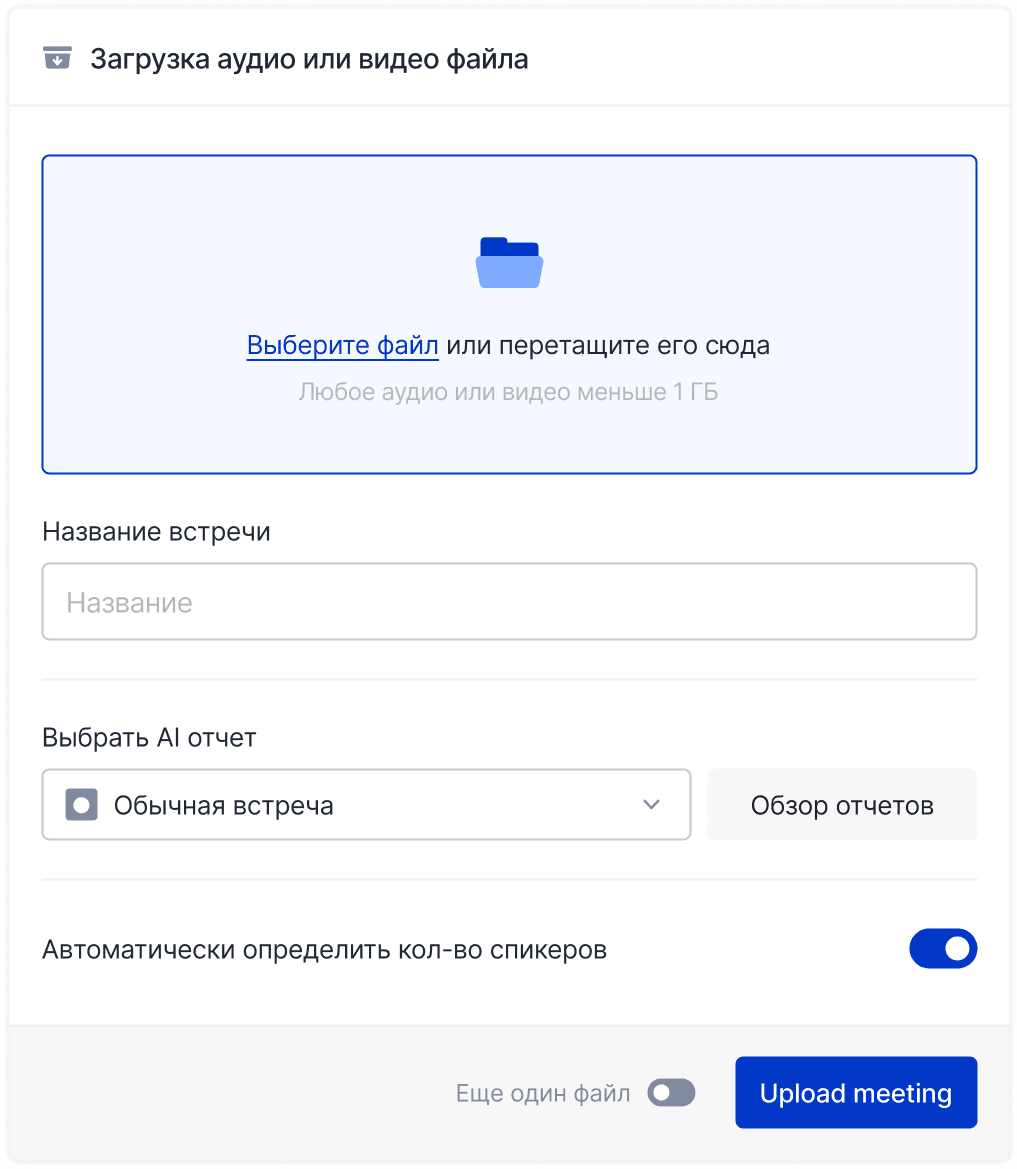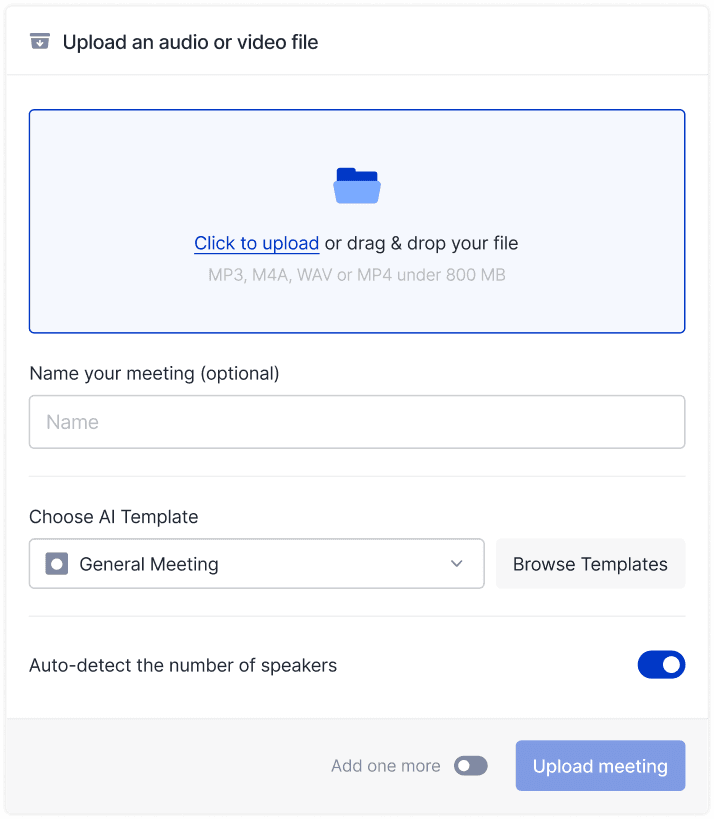Meeting Tips

Andrey Shcherbina
Nov 9, 2024
With the growing number of meetings and the need to improve work efficiency, it is important not only to hold meetings, but also to sum up their results correctly. Effective meetings are meetings where concrete results have been achieved and further steps have been identified. In this article, we will look at how you can summarize the meeting in different ways and how to choose the appropriate format.
Why is it important to summarize the meeting?
Summarizing the results of the meeting is a key element of effective teamwork. Meetings where the results are not summed up often lose their value, since decisions and tasks may not be fixed, and participants may not be involved in further tasks. The results of the meeting help:
Increase team engagement
When participants know that the results of the meeting will be recorded, they participate more actively and feel responsible for completing their tasks. It also motivates them to participate in discussions and contribute, as they see that their opinions and suggestions matter.
Monitor the progress of tasks
The results allow you to monitor the completion of tasks and understand at what stage the work is. This is especially important for long-term projects where there are many tasks and participants. Regular summarizing helps not only to monitor current progress, but also to make adjustments if necessary, preventing deviations from the plan.
To avoid loss of information
If the results of the meeting are documented, then no task or agreement will be forgotten, which reduces the risk of misunderstandings and omissions. It also facilitates access to information for participants who were unable to attend the meeting, helping them to quickly get up to speed.
Ensure transparency and accountability
When the results are recorded and sent to all participants, it creates an atmosphere of transparency. All participants know that they are responsible for completing specific tasks on time, and this helps to avoid confusion and misunderstandings.
Increase the effectiveness of meetings
The results contribute to improved teamwork and provide better task planning. Regular summarizing helps not only to monitor current progress, but also to make adjustments if necessary, preventing deviations from the plan. Examples of how companies save time in meetings using automation can be found in our case about the company BigDigital where AI has helped save more than 50 hours per month.
Summing up the meeting is an important stage that allows you to record the results achieved, assign those responsible for completing tasks and determine deadlines. Without a proper summing up of the meeting, all decisions may remain at the level of words, and participants may not have a clear understanding of what to do next.
Ways to summarize the meeting
There are several basic formats that help record the results of the meeting. Depending on the type of meeting and its objectives, one format may be more appropriate than the other. Let's look at the main formats, their features and the situations in which they are most effective:
Minutes of the meeting
A meeting's minutes are a formal record of the discussion, decisions, arguments, and opinions of participants. They provide a detailed account of what was said, discussed, and agreed upon. Minutes can include information about who spoke, what issues were raised, and what conclusions were reached. This allows for a complete history of the discussion to be preserved, which can be particularly useful for official meetings, legal proceedings, and negotiations.
When should the protocol be applied?
When it is necessary to fully document the meeting in order to record all the details of the discussions.
When the meeting is of a legal nature and logging is necessary to prevent future disputes.
When external stakeholders are involved, which may require full transparency of the process.
Protocols are used for formal meetings when it is important to have a complete documentation of all aspects of the meeting. For more information on how to make meeting minutes, read our article "Meeting Minutes: The Complete Guide".
Summary of the meeting
A summary is a shorter format that captures the main conclusions, tasks and responsible persons. Unlike the protocol, the summary does not include all the details of the discussion, but only the key points and decisions made. This saves time and makes the final document easier to read, especially for those who did not attend the meeting but want to familiarize themselves with the results.
When to use a resume?
When it is necessary to quickly convey the key results of the meeting.
When a meeting does not require full documentation, but it is important to fix the main agreements and tasks.
For project meetings, meetings with clients or partners, where fixed information is important, but without unnecessary details.
The resume is used for those meetings where it is important to capture key points, but there is no need for full documentation. Learn more about how to make meeting summaries in our article "Meeting Summaries: what is it and how to compose it?".
Notes from meetings
Notes are the shortest format, which includes only the main conclusions and tasks, without additional details. Notes usually take only a few sentences and are used to quickly convey basic information. This format is ideal for internal meetings, brainstorming sessions or operational meetings where you need to record only the results, not the entire course of discussions.
When to use notes?
When it is important to quickly capture the main points without going into details.
For short meetings, brainstorming sessions or meetings where operational issues were discussed.
When it is necessary to provide brief information to management or colleagues so that they can quickly familiarize themselves with the results.
Notes is convenient to use for internal meetings and brainstorming sessions, where you need to quickly capture key points. Read more about notes in the article "Meeting notes: Examples and best practices".
When should I use a protocol, summary, or notes?
Each format has its own characteristics and is suitable for different situations. It is important to understand when to use a particular format:
Protocol: Used for official meetings, business negotiations and meetings, the results of which may have legal significance.
Summary: Suitable for project meetings, meetings with clients, where it is important to record the main decisions and agreements.
Notes: Used for short internal meetings, where it is important to quickly capture the main points without excessive detail.
General rules for forming the results of the meeting
To make the final document useful and clear, follow the following rules. These recommendations will help make the summing up process more efficient and ensure that tasks are completed on time.
Record the key points during the meeting.
Record the main decisions and tasks right during the meeting to avoid losing information.
Structure the final document.
Use ready-made templates or established formats to make the final document structured and easy to read.
Determine the responsible persons and deadlines for completing tasks.
Be sure to specify the responsible persons and deadlines for completing tasks in order to clearly assign responsibilities and monitor performance.
Send the meeting results as soon as possible.
The speed in sending the results is important to keep the information up-to-date and motivate participants to complete tasks.
Common mistakes in summing up the meeting
Excessive detail: When compiling the results, it is not necessary to overload the document with unnecessary details. It is important to highlight only the key points and solutions.
Missing key decisions and tasks: Important agreements or tasks are often missed, leading to confusion and misunderstanding among the participants.
Absence of designated responsible persons: If the results do not specify those responsible for completing tasks, then the probability that they will be completed on time decreases.
Delayed sending of results: If the meeting results are sent too late, participants may forget the details and lose motivation to complete tasks. It is important to send the results as soon as possible after the meeting.
How does AI help to summarize the meeting?
Modern tools based on artificial intelligence (AI) greatly simplify the process of summing up the meeting. These technologies allow you to automatically capture key points, analyze conversations and create user-friendly reports. Here's how AI can help:
Automatic summary creation: AI tools can automatically generate minutes, summaries, or notes by analyzing the meeting record and highlighting key points.
Multitasking support: AI allows participants to focus on discussion rather than taking notes, which significantly increases productivity and reduces the likelihood of missing important details.
Simplify task allocation: AI-based tools can automatically assign task managers and set deadlines, which simplifies follow-up control.
Tools such as mymeet.ai , connect to online meetings, record and analyze conversations, automatically generate protocols, summaries or notes. This saves participants time and minimizes the risk of missing important details, ensuring transparency and organization of tasks.
Summing up the meeting is an integral part of effective teamwork. Choosing the right format — protocol, summary or notes — depends on the goals and context of the meeting. Using modern tools such as mymeet.ai , allows you to automate this process, saving time and improving the quality of recording results.
Use the functionality mymeet.ai for convenient management and storage of meeting results, making the process simpler and more efficient. We offer a free period of 180 minutes of processing, you can start using the service without additional settings.
Andrey Shcherbina
Nov 9, 2024








